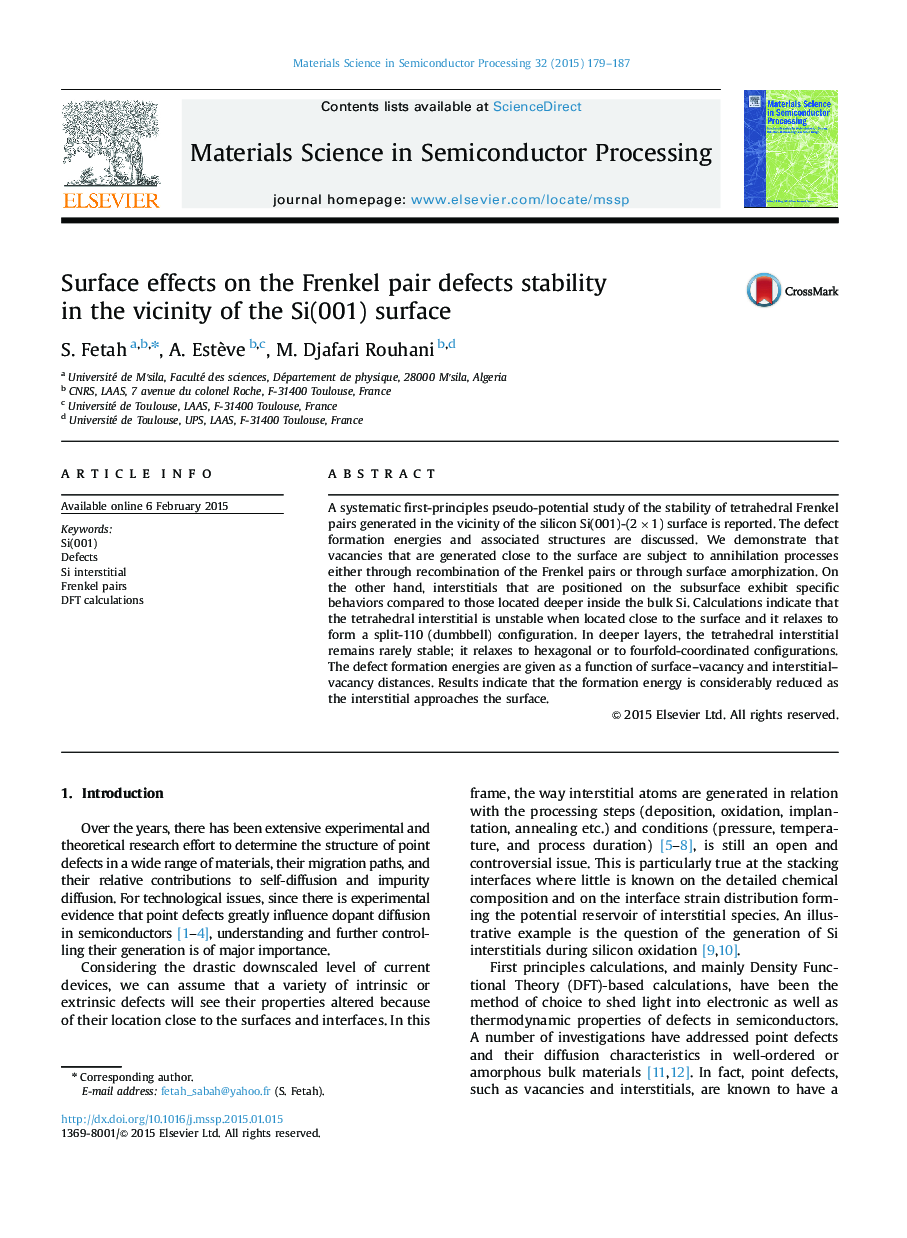| Article ID | Journal | Published Year | Pages | File Type |
|---|---|---|---|---|
| 7119479 | Materials Science in Semiconductor Processing | 2015 | 9 Pages |
Abstract
A systematic first-principles pseudo-potential study of the stability of tetrahedral Frenkel pairs generated in the vicinity of the silicon Si(001)-(2Ã1) surface is reported. The defect formation energies and associated structures are discussed. We demonstrate that vacancies that are generated close to the surface are subject to annihilation processes either through recombination of the Frenkel pairs or through surface amorphization. On the other hand, interstitials that are positioned on the subsurface exhibit specific behaviors compared to those located deeper inside the bulk Si. Calculations indicate that the tetrahedral interstitial is unstable when located close to the surface and it relaxes to form a split-110 (dumbbell) configuration. In deeper layers, the tetrahedral interstitial remains rarely stable; it relaxes to hexagonal or to fourfold-coordinated configurations. The defect formation energies are given as a function of surface-vacancy and interstitial-vacancy distances. Results indicate that the formation energy is considerably reduced as the interstitial approaches the surface.
Related Topics
Physical Sciences and Engineering
Engineering
Electrical and Electronic Engineering
Authors
S. Fetah, A. Estève, M. Djafari Rouhani,
